Notre-Dame de Gravenchon to Saint-Wandille-Rançon
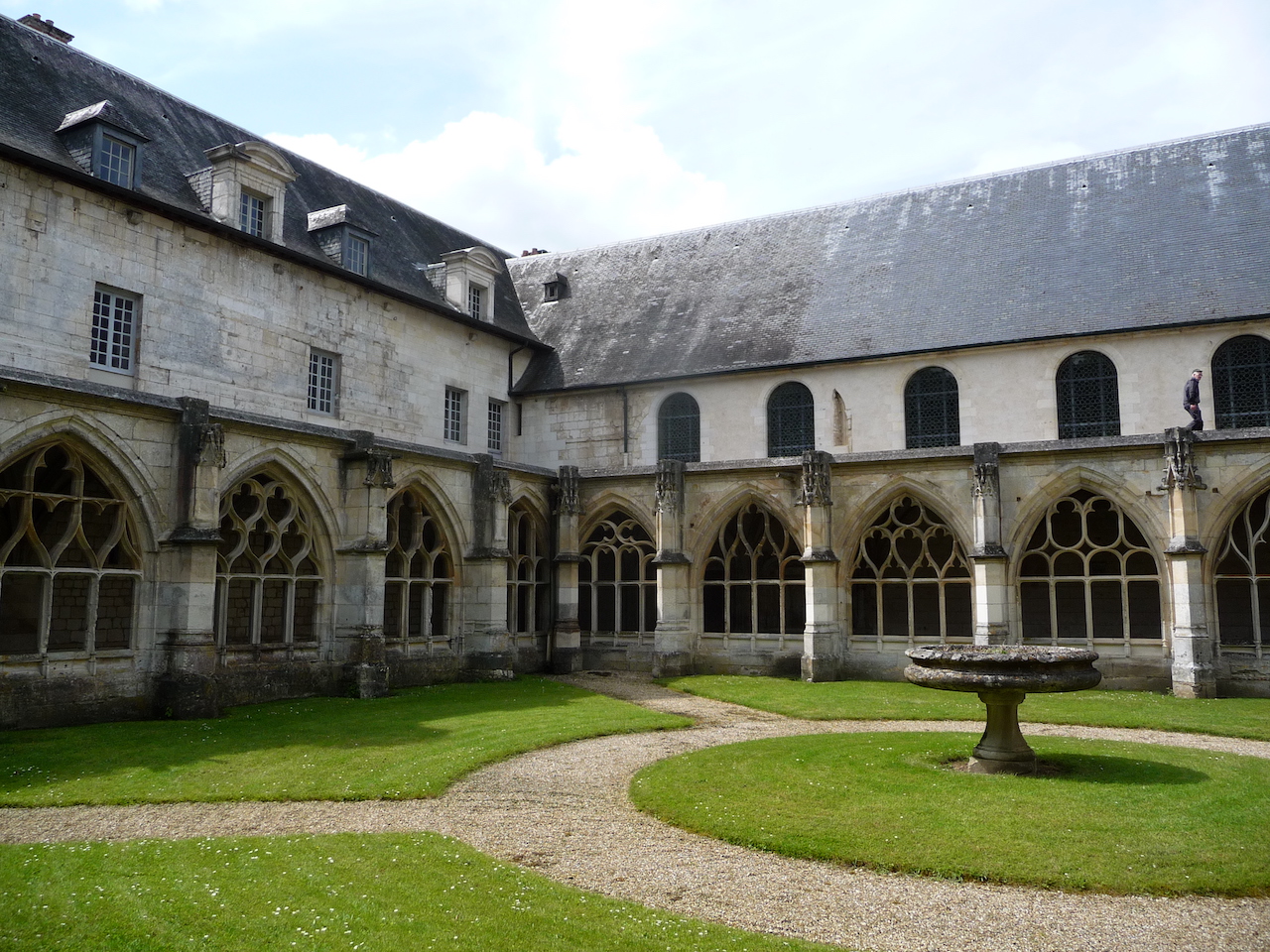
Normandie
16. Notre-Dame de Gravenchon to Saint-Wandille-Rançon
Very easy
4h
17,5km
+388m
-392m
Step
Embed this item to access it offline
After crossing the town of Notre-Dame-de-Gravenchon, you climb up to reach the plateau overlooking the Seine. We will pass the Abbey of Triquerville, the Castle of Villequier. Then the road to Caudebec-en-Caux. We find the banks of the Seine. After a detour in the town to visit its rich heritage, we are again on the banks of the Seine. Pass in front of the Latham 47 monument and cut the main road to get back to the hills. We will then find the river, La Fontenelle, as far as the Fontenelle Abbey in St-Wandrille-Rançon.
8 points of interest
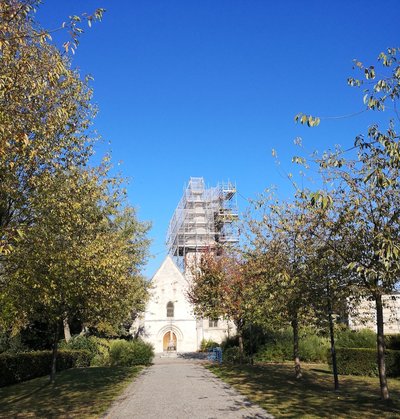
Église Notre-Dame à Notre-Dame de Gravenchon - Amis saint Colomban TouristÉglise Notre-Dame Church à Port-Jérôme-sur-Seine
The parish church of Notre-Dame was originally a chapel attached to the parish church of Saint-Georges de Gravenchon. It was built in the 12th century. It was three ships long, but the side aisles were destroyed. The spire of the tower was built in the 17th century. In the first quarter of the 19th century the choir was rebuilt, keeping the original gable. The sacristy was built from 1851 to 1852. The south aisle was erected in 1899 by Constant Martin.
Château de Villequier - Amis saint Colomban HistoricalVillequier Castle
The castle of Villequier (17th century) with its chapel, its 18.82 hectare listed park and a panorama 35 kilometres away is situated on the heights of Villequier. The present pink brick and stone residence was completed in 1784 on the initiative of Jean-François Jacques Asselin on the former fiefdom of Beaumesnil. The name Beaumesnil was brought from the land of Ouche by Robert d'Harcourt who married Jeanne de Villequier in the 13th century.
This great lord, who was a little later at the head of the Parisian National Guard, created a superb gardener's ensemble. After several changes of ownership during the first half of the twentieth century, the castle was to revive in 1974 under the leadership of Maurice Lalonde, Caudebec-en-Caux with the transformation of the estate into a residential hotel.
Until 2007, the Château de Villequier remained a hotel and a renowned venue for private and professional receptions in Normandy.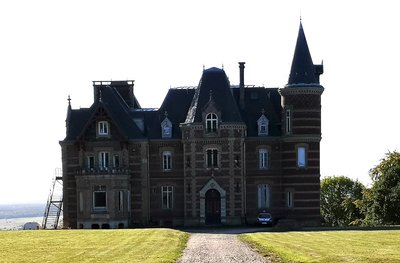
Le Château de la Guerche - Amis saint Colomban TouristChateau de la Guerche in Rives-sur-Seine
Built in 1627, Charles Marie de Villequier acquired the estate in 1638. In 1685, the manor house was transformed into a farm. In 1850, Léon Malfilatre, the future Mayor of Villequier, bought it along with the wood from La Roquette. He notably built a hunting lodge and a path to the Seine. Around 1875, the hunting lodge was enlarged and became the current castle of La Guerche in Anglo-Norman style. During the Second World War, V1 ramps were installed by the Germans, who occupied the estate, on a promontory not far from the castle.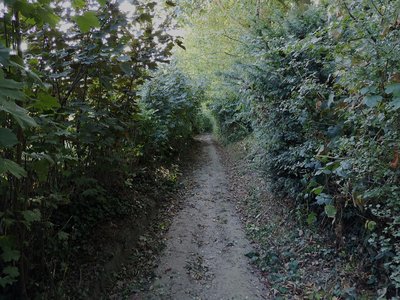
Un sous-bois agréable pour la promenade en été - Amis saint Colomban PanoramicLa Hêtraie de Barre-y-va en Rives-de-Seine
Planted in the 19th century, the "Barre-Y-Va" beech grove is a sort of "plant canopy", where two hundred trees stand on either side of the roadway for about 500 metres. It was classified in 1937 as a natural site and monument. This old road in Rouen, which was once very busy, was also voted "most beautiful kilometre in France" in 1957 by the Automobile Club de France.
Église Notre-Dame à Caudebec-en-Caux - Amis saint Colomban TouristNotre-Dame Church in Caudebec-en-Caux
Historians agree that the Logium Monastery is located in the town of Caudebec-en-Caux.
The monastery was built in the mid-7th century at the time of King Dagobert. It is part of a vast monastic movement in the lower Seine valley up to its estuary. During the 7th and 8th centuries, the monks followed the rule of the good fathers Benedict and Colomban spread in Gaul by their brothers of Luxeuil. An ancient plan of the town shows a layout of three churches, Saint-Martin to the north, Saint-Pierre to the south and Notre-Dame halfway between the two buildings. A layout present in Luxeuil during the presence of Colomban and his companions.
The church of Notre-Dame de Caudebec-en-Caux, built on the site of an older church, is the main church of the town of Caudebec-en-Caux.
King Henri IV is said to have said that it was one of the most beautiful churches in France: "It is the most beautiful chapel in my kingdom". Indeed, this manifesto of the flamboyant Gothic and early Renaissance style does not include a transept, in the same way as Saint-Maclou de Rouen, contemporary of this church, and which perhaps justifies the royal description of "chapel".
Its west portal is finely sculpted and decorated with a whole host of sculptures (originally 333) representing saints, but also characters from everyday life at the time, including a loure player, which is one of the rare representations of this lost musical instrument.
Unfortunately, everything was mutilated by the Calvinists during the Wars of Religion and the fires set by the bombings of June 1940 condemned the rich historical heritage of Caudebec-en-Caux.
Maison des Templiers à Caudebec-en-Caux - Amis saint Colomban TouristMaison des Templiers à Caudebec-en-Caux
From the 12th century, a civil house made of local stone has come down to us, in a village in the Pays de Caux, once made up of half-timbered houses, as was common in this region at that time, which contrasts somewhat. The house of the Templars in Caudebec-en-Caux has always been a singular house since its foundation, a rare civil building of this style with ogival windows and gargoyles.
It is therefore a remarkable witness to History, not only by itself, by its architectural quality; still standing despite its great age (more than 800 years old!), but also by what it contains today: a local museum exceptional in its diversity, a showcase of local life since its origins.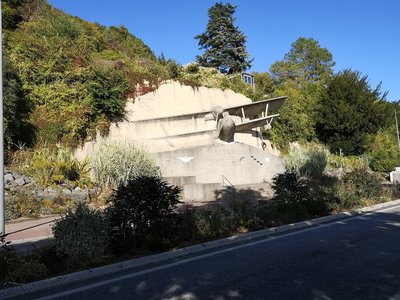
Le Mémorial de l’équipage et de ses passagers du Latham 47 - Amis saint Colomban HistoricalMonument Latham 47 in Caudebec-en-Caux
The Latham Company was an aircraft construction company founded in 1916 by Jean Latham, cousin of Hubert Latham, in Caudebec-en-Caux, on the banks of the Seine. It built seaplanes for the French Navy. Hubert Latham (Arthur Charles Hubert Latham) is a pioneer of aviation, holding a pilot's licence in 1909.
In 1927 the factory is in liquidation, Félix Amiot, aircraft manufacturer in Cherbourg, buys the Latham factory in Caudebec-en-Caux. In 1928, a drama made the "Natham 47" plane famous. The Norwegian explorer Roald Amundsen, in search of a seaplane to go to the rescue of Umberto Nobile's expedition in perdition on the ice pack in the north of Norway. The new Latham 47 seaplane has just left the Caudebec factory. It is sent on the ice pack to search for the shipwrecked. The plane disappears with its crew and explorer Roald Amundsen.
The memorial commemorates the tragedy of Latham 47.
L’abbaye Saint-Wandrille vue depuis le parc - Amis saint Colomban St ColumbanSaint-Wandrille Abbey at Saint-Wandrille-Rançon
The monastery was founded by Saint Wandrille, count of the palace of Dagobert, who acquired from Erchinoald mayor of the palace of Clovis II, the domain of Fontenelle by a deed passed on 1 May 649. Since its foundation the monastery has known important moments in its history which will give its reputation to the political, cultural and spiritual worlds of that time.
It is part of a vast monastic movement in the lower Seine valley as far as its estuary. During the 7th and 8th centuries, the monks followed the rule of the good fathers Benedict and Colomban spread in Gaul by their brothers of Luxeuil. This monastic prosperity was encouraged by the Frankish aristocracy who entrusted the education of their children to monks who hoped to make them faithful servants of God.
In 858 the monastery was plundered and devastated by the Normans; the monks fled with the relics to the north to the abbey of Saint-Pierre-au-Mont-Blandin in Ghent (Belgium). The monks returned to the bank of the brook, the Fontenelle, around 960. A new abbey was rebuilt downstream of the Fontenelle. In 1562 the monastery was sacked by Huguenot troops. The community adopts the reform of the congregation of Saint-Maur in 1636. The Revolution expels the monks, the buildings are sold to set up workshops for part, while a stone quarry destroys the remaining buildings. During the 19th century the whole complex suffered the ravages of time, in 1894 a community restored monastic life, but the law of 1901 forbidding religious congregations closed the abbey. It was the aircraft manufacturer Latham who bought the buildings to give them to the community in exile in 1931. Since that date a Benedictine community has been running this famous abbey.
Description
Departure from Saint-Georges church in Notre-Dame de Gravenchon. Go down the Avenue Anatole France to the roundabout. Turn left, rue Henri Messager then left again rue du Président René Coty. Straight on rue Hélène Boucher, turn left and continue on rue Hélène Boucher,
- First street on the right rue Clément Ader, turn left, rue Gaston Alexandre, at the crossroads turn right, third road on the right direction Touffreville-la-Cable, route du Pré Mancais, turn left on D28
- First right on route de Bebec, turn right at the crossroads, route de la Mare à Bache, straight ahead at the junction with the D281, pass the Château de Villequier, straight ahead on chemin de la Guerche, follow the red and white signs.
- At the level of the house on the left the road becomes a path in the wood. Red and white markings stay on your in the main path, on the left crossroads of the paths to the Martinière, stay on the height following the Seine.
- Turn left at the crossroads on avenue Winston Churchill, turn right, cycle path on the bank of the Seine, after the town hall turn left, cross the D982, take rue du Huit Mai, turn right along the church, second street on the right, pass under the building, rue Thomas Bazin on the left of the Caisse D'Épargne.
- Cross the D982 and turn left to take the edge of the Seine.
- After the Monuments du Latham 47 on the left, cross the D982 and take Sentier des Pécheurs, on the right, rue Corniche de Retival, stay on your right and pass under the bridge of the D 490.
- Cross the road of Rançon, take a path in the woods, cross the Rance river, on the left at the crossroads with a path, then on the right stay on the edge of the brook La Fontenelle by turning on the right on the cemented path.
- On the right in front of the wall of the abbey of Saint-Wandrille, on the right at the crossroads you are in front of the church of Saint-Michel.
- Departure : Saint-Georges Church, avenue Anatole France, 76330 Notre-Dame de Gravenchon
- Arrival : Saint-Michel Church, place de L’Église 76 490 Saint-Wandrille-Rançon
- Towns crossed : Normandie
Altimetric profile
Report a problem or an error
If you have found an error on this page or if you have noticed any problems during your hike, please report them to us here:








